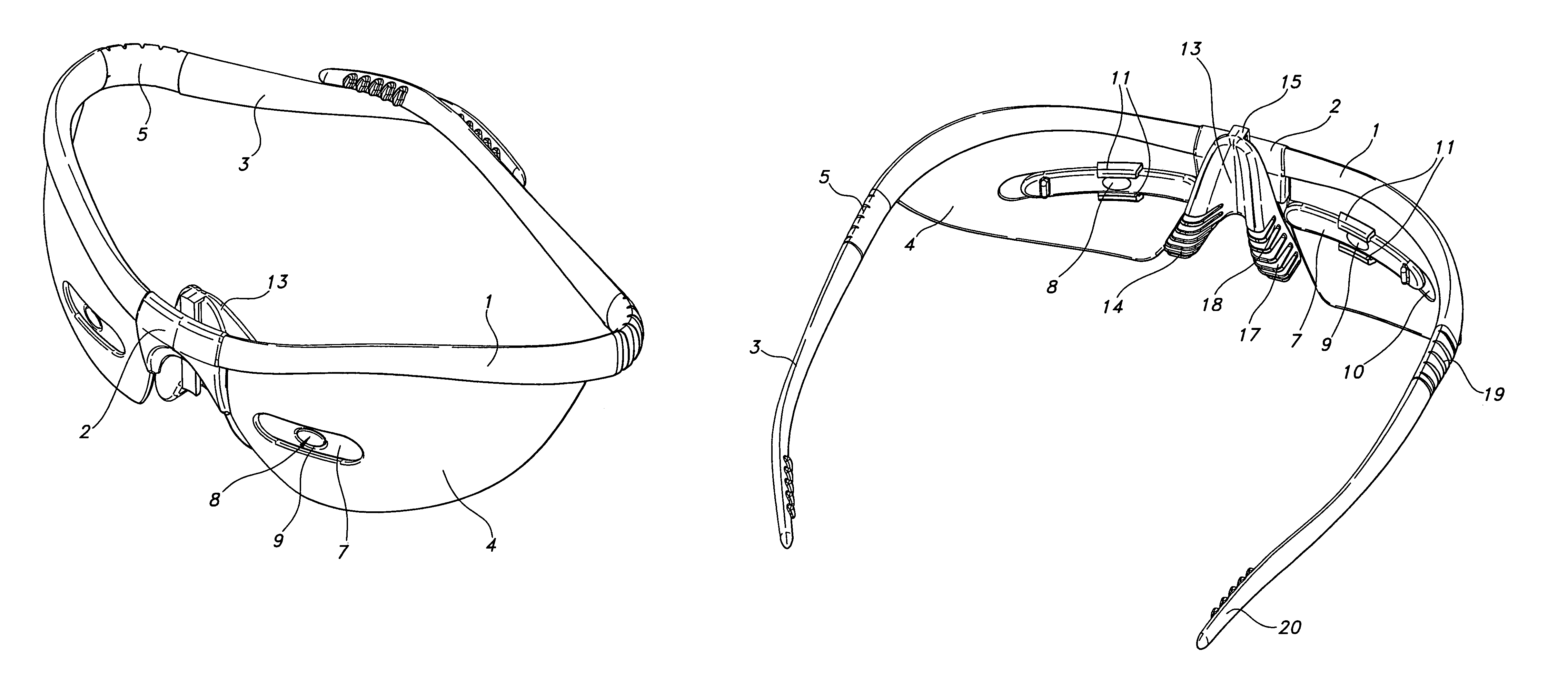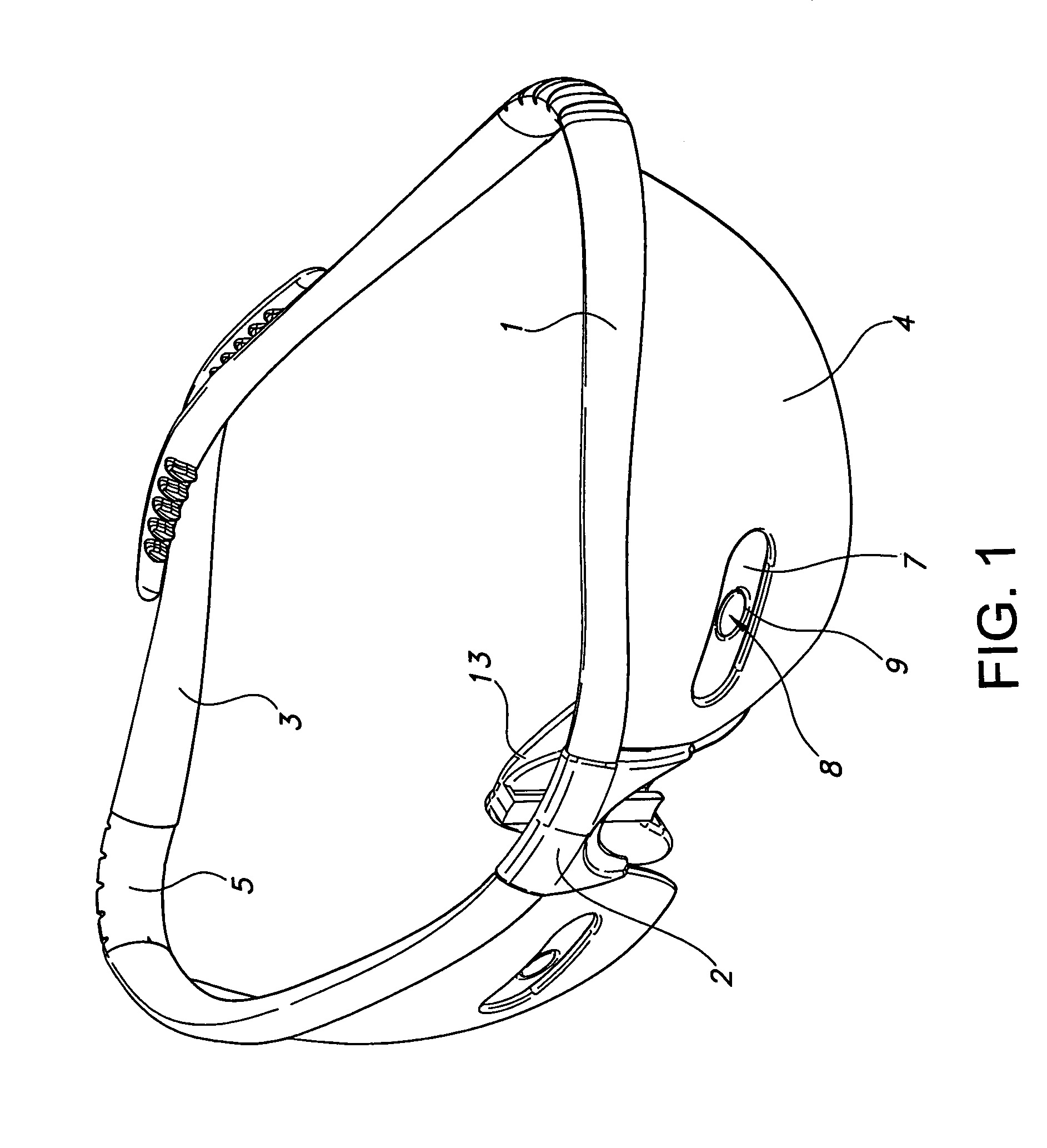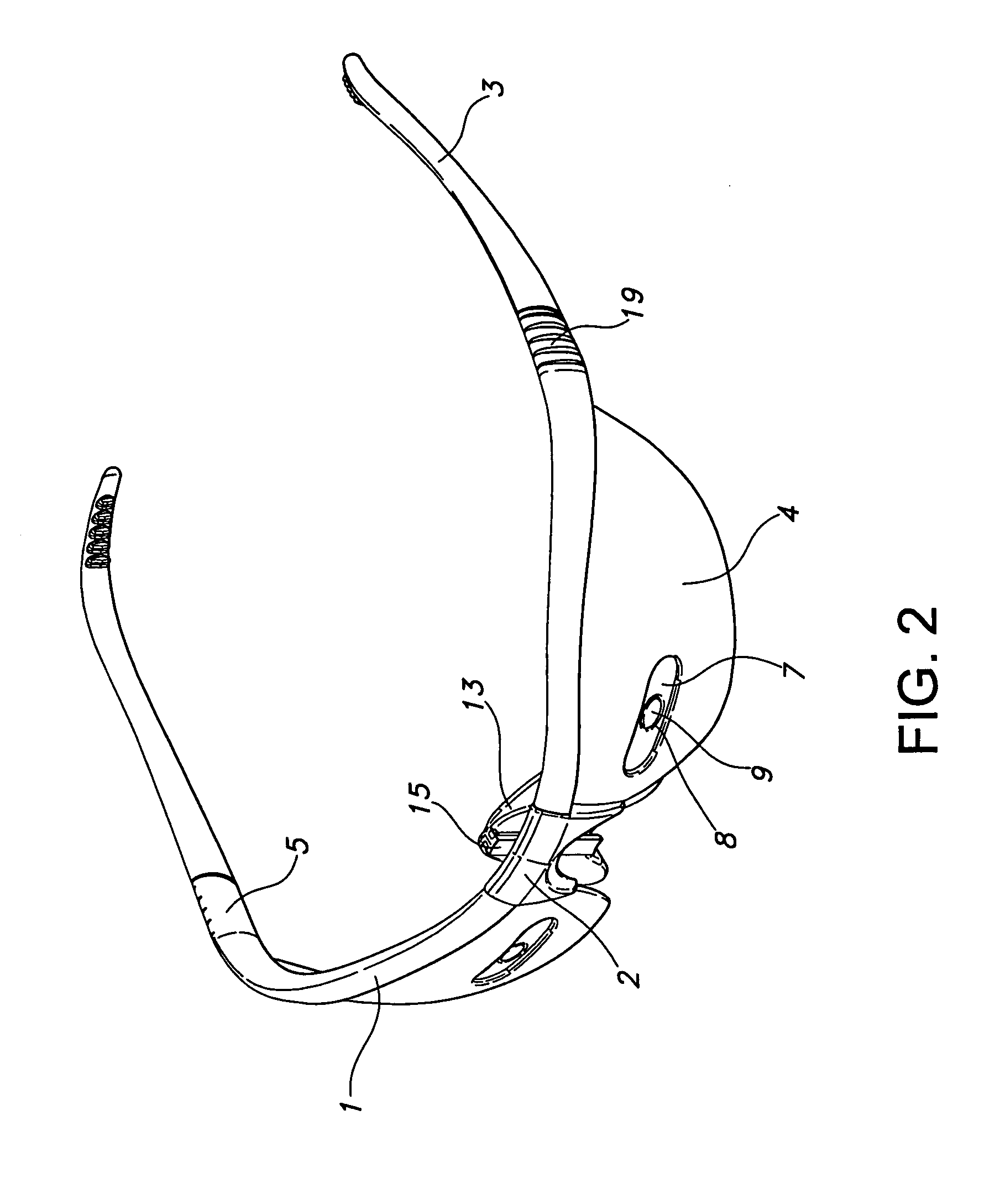Sports training glasses
a training eyeglass and sports technology, applied in the field of sports training eyeglasses, can solve the problems of cumbersome use and difficult use of the ramsay invention, and achieve the effect of convenient means for adjusting the horizontal position and the apertur
- Summary
- Abstract
- Description
- Claims
- Application Information
AI Technical Summary
Benefits of technology
Problems solved by technology
Method used
Image
Examples
Embodiment Construction
[0031]The following discussion describes in detail one or more embodiments of the invention. The discussion should not be construed, however, as limiting the invention to those particular embodiments, and practitioners skilled in the art will recognize numerous other embodiments as well. The complete scope of the invention is defined in the claims appended hereto.
[0032]As shown in FIGS. 1 through 7, an improved sports training glasses is comprised of, in part, an elongated frame 1 and a bridge 2. The bridge 2 is located at the middle of the frame 1. The bridge 2 may be shaped for resting directly on a wearer's nose, or, in the preferred embodiment, serves as a base to which an additional nosepiece 13 is attached. A pair of temple arms 3 is disposed at either end of the frame 1. A pair of opaque lenses 4 is disposed on the lower edge or surface of the frame 1, on either side of the bridge 2. The opaque lenses 4 are rigidly, but detachably, affixed to the frame 1. Each opaque lens 4 h...
PUM
 Login to View More
Login to View More Abstract
Description
Claims
Application Information
 Login to View More
Login to View More - R&D
- Intellectual Property
- Life Sciences
- Materials
- Tech Scout
- Unparalleled Data Quality
- Higher Quality Content
- 60% Fewer Hallucinations
Browse by: Latest US Patents, China's latest patents, Technical Efficacy Thesaurus, Application Domain, Technology Topic, Popular Technical Reports.
© 2025 PatSnap. All rights reserved.Legal|Privacy policy|Modern Slavery Act Transparency Statement|Sitemap|About US| Contact US: help@patsnap.com



